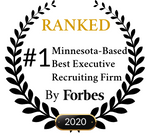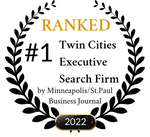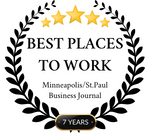As a candidate, you’ve probably gotten plenty of advice on how to get your resume past the ATS (Applicant Tracking Systems, those AI-powered screeners most employers and recruiters use these days).
That’s all very useful. But how will your resume fare in the next round? How do you survive the human scan?
At SkyWater Search Partners, our recruiters review hundreds of resumes every day. I, personally see hundreds of resumes every week.
Note: I didn’t say that I read them all. I see them.
Truth is, there’s no way that a good recruiter could read every word on every resume that makes it through the initial screening. Instead, we give each one an initial once-over. It’s that first glance that convinces a recruiter to take a closer look… or pass.
Depending on which survey you read, if your resume makes it onto the desk (or desktop) of an actual hiring manager or recruiter, you have roughly six seconds to grab their attention and be placed on the pile of ‘potentials’ for interview.
That’s right… 6 seconds.
Will your resume pass the 6-Second Resume Test? Here are three tips to boost your chances:
Organize your Qualifications Around the Job Posting
Employers and recruiters want rapid confirmation that your achievements and qualifications are a perfect (or near-perfect) match to the job requirements. Always put your qualifications that match the job description at the top of your resume. Ensure you place special emphasis on the specific requirements listed in the job description. Use formatting like bolding, italicizing, and underlining to make these qualifications easiest to spot. Then back them up with compelling examples. Stay focused on drawing attention to the important skills and experiences, and making it easy for the recruiter to notice your qualifications. Don’t clutter the resume with unnecessary details.
Draft, Edit and Perfect
Trust us, the resumes we remember (apart from clearly identifying relevant skills and qualifications) are those where it is obvious that the candidate invested serious time and effort in marketing themselves well. Professional resumes that are well-organized, easy to read, and compelling tell the recruiter, “this candidate gets it.” A badly structured resume portrays you as a candidate who doesn’t communicate well and makes the process more difficult than it needs to be.
Create Compelling Content
Be succinct. Be concise. But also choose words that are powerful and descriptive. Long, bland paragraphs make for a bored hiring manager. Likewise, most of your hobbies and non-career activities are not helpful, relevant or interesting to a hiring manager. The exception to this: if your leisure time activities demonstrate skills and experience that are directly relevant to the job, highlight briefly at the end. Also, do not go into too much detail on your achievements. Name them. Quantify them. But remember, the aim of your resume is to be invited to an interview. You can share the rest of the details when you’re face-to-face.
If you know you’re qualified, but you’re not getting positive responses to your applications, try the above tips.
You have 6 seconds… So rework that resume, grab that hiring manager’s attention, and secure that interview.
---
Related Reading:
How To Respond When Asked About Your Salary Requirements
How To Respond To The 5 Most Difficult Interview Questions
4 Questions To Ask Before Switching Jobs






